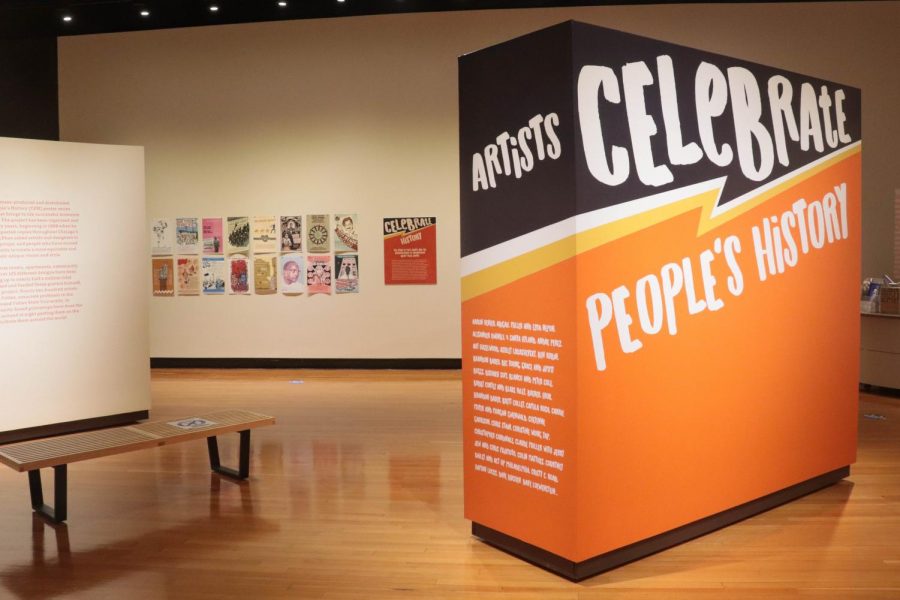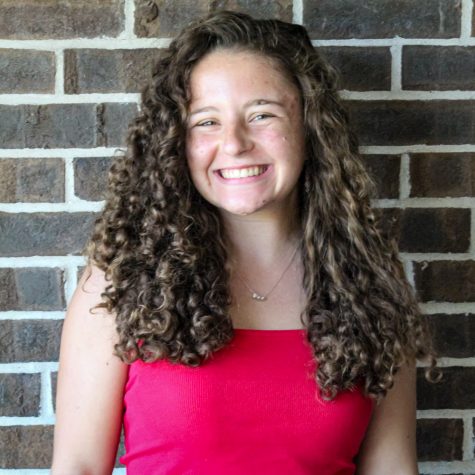GV Art Gallery remains connected with visitors in more ways than ever before
Sep 21, 2020
Grand Valley State University’s Art Galleries located in the Thomas J. and Marcia J. Haas Center for Performing Arts and the George and Barbara Gordon Galleries in the Richard M. Devos Center officially reopened on Aug. 28 with new, limited hours for visitors.
The gallery is open Monday, Wednesday and Friday from 1-5 p.m. and Thursday from 1-7 p.m., drawing in small groups of students, faculty and staff each day.
Although some have decided to take advantage of the gallery’s new hours and enjoy it in person, many have decided to continue making their visits virtually.
Since long before the COVID-19 pandemic, GVSU’s art galleries have been accessible in an online format. Nathan Kemler, the Director of Galleries and Collections, said GVSU’s entire art collection has been available online for 10 years now, also including on the mobile app, “Art at GVSU.”
Throughout the pandemic, as more and more visitors began to utilize the online resources the gallery was providing, further steps were taken in order to enhance the gallery’s experience from the comfort of home.
Kemler said there have been many new resources put into place to allow visitors to engage with the artwork, some of which include new learning guides, essays, blogs and exhibition-related reading lists.
“Our ultimate goal is to provide the academic support needed for our community to use the art collection in active research and projects, be that at GVSU or out in our communities that we live and work in,” said Kemler.
GVSU Art Gallery UX/Learning Manager Amanda Rainey said the improvements do not stop there. The gallery now also offers a 3D virtual tour of the exhibitions, the ability to download Zoom backgrounds of artwork from the collection and a way to curate your own set of artwork to share with friends, family, students and colleagues.
While the gallery is using its website and app to make the artwork available to anyone interested in viewing and educational purposes, they are using their social media in an attempt to get people involved in gallery activities once again.
The gallery’s latest exhibition, “Celebrate People’s History,” features over 100 posters created by different artists, designers and writers that shed light on successes throughout the history of the struggle for social justice.
Starting Sept. 3, the art gallery has taken to their Instagram account almost every Thursday from 1-1:30 p.m. and used the Instagram Live feature to highlight some of their favorite posters from the exhibition. Although the virtual turn-out has started small, Rainey said she is hopeful the number will grow as more and more find out about the exhibition.
“The exhibition has over 100 posters, so the Instagram Live sessions are also a way for us to break up the content into smaller chunks, to provide contextual information and to make connections with other artworks and artists in the GVSU permanent collection,” Rainey said.
The gallery is also hosting a month-long virtual workshop where anyone can go to create their own social justice poster. A downloadable template and step-by-step guide can be found online or a DIY poster pack can be found on campus at the Calder Art Center, Haas Center, Kirkhof Center or the libraries in Allendale and Grand Rapids.
Rainey believes that now, more than ever, it’s essential for the gallery to remain accessible to students in any and every way possible.
“I think it’s important for students to have access to artwork during this time because so many extracurricular events and experiences aren’t available,” Rainey said. “My favorite moments in art museums and galleries are those serendipitous interactions, where you come across an artwork or story that hits on something you’re passionate about but didn’t know existed before. Those moments can still happen online.”
Kemler agrees, and feels that despite the current situation the stories provided through artwork must still be available to those that need them.
“Artwork provides us with a visual narrative of our collective experiences,” Kemler said. “This includes the good, the bad, and the ugly. Therefore, we believe that art matters now more than ever. We need to engage with stories of love, peace, empathy, social justice, identity, ambiguity, and change. The artwork tells these stories beautifully and provides us with a forum for engagement.”
























